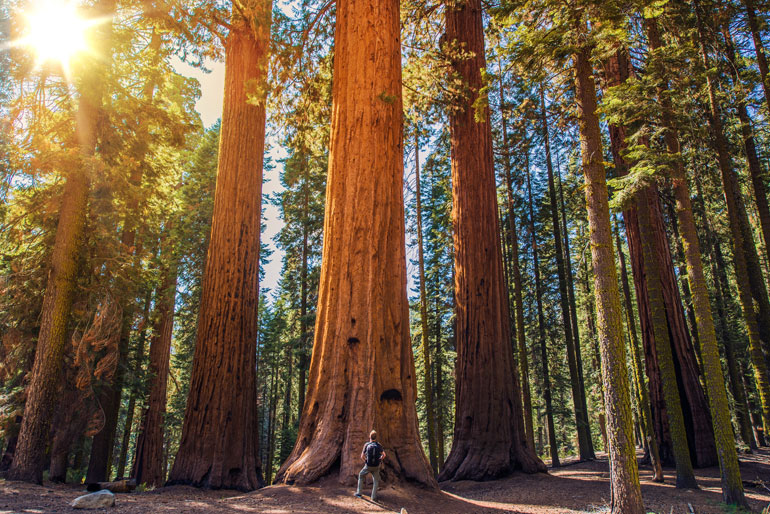Redwoods are found only in the coastal region of northern California and Oregon, together with small groves in the Sierra Nevada Mountains. The coastal redwoods are the world's tallest trees, while the Sierra redwoods are the most massive trees in the world.
The trees are evergreen conifers and extremely long-lived. Their life span is estimated as on average 2200 years, but tree rings show one at least has lived for 3,500 years. The Coast Redwoods reach 380ft (115m) and have a trunk diameter of 30ft (9m). The red-brown bark gives the tree its name. It is up to 1ft (30cm) thick, soft and fibrous.
Cones are quite small (about an inch - a couple of cm long). The seeds are released when the cone scales dry. Fog is of major importance to coastal redwoods, and they get much of their moisture from it. That is why they are not found inland except in the mountains where rainfall is greater anyway. Few redwoods grow very close to the ocean because of salt spray.
So a combination of seasonal rains up to 100in (2,500mm), cool coastal air and fog drip keep the trees supplied with water all year long.
The thick bark provides good protection from both fire and insect damage, helping to explain why they live so long.
If a coastal redwood tree falls over, it may regenerate a row of new trees along the trunk, which is why many trees naturally grow in a straight line. When an old tree dies, sprouts from the base form a ring of trees around the parent root stump.






